You'll heat your oven more effectively in winter using three proven methods. First, position your solar reflectors at ideal angles and keep them clean to maximize sunlight capture during shorter winter days. Second, wrap your oven with multiple layers of ceramic fiber blanket insulation to prevent heat loss in cold temperatures. Third, install a pre-warming heat collection chamber with built-in heat exchangers to boost incoming air temperature by 30-50°C. These techniques work together to guarantee your oven reaches and maintains proper cooking temperatures, even on the chilliest days. Discover how to implement each method for the best results.
Solar Reflector Positioning

During winter months, proper positioning of your solar reflector is essential for ideal cooking performance. For best results, lay your Sun Oven on its back to accommodate the lower winter sun angle.
You'll need to open and secure the reflectors with the thumbscrew, even in this flat position.
Use the E-Z Sun-track indicators to align your oven properly – the round dot of light should shine directly into the bottom hole of each indicator.
Since winter sun patterns differ, you'll want to check and adjust the oven's position every 30 minutes. While the thermometer might appear upside down in this setup, you'll gain an extra hour of cooking time during morning and evening hours. Clean reflectors daily will help maintain optimal heating performance during limited winter sunlight.
For stability, utilize the carrying handle and add support under the raised portion if needed.
Insulation Layer Setup
A well-insulated solar oven is essential for efficient winter cooking.
You'll want to start by wrapping your oven with 2-4 layers of ceramic fiber blanket, making sure to overlap the joints for complete coverage. Three layers work particularly well for high-volume baking over multiple days.
Don't compress the material, as this reduces its insulating properties.
Create a wire frame using chicken wire or heavy-gauge netting to hold the insulation in place.
Then, mix vermiculite or perlite with cement to form an insulating concrete layer.
Apply this mixture over the wire frame, ensuring you've left enough space between layers.
Finally, add a protective stucco coating to shield the insulation from moisture and weather damage.
Remember to extend the insulation to cover the vent and chimney areas, as these are common spots for heat loss during winter operation.
Pre-Warming Heat Collection Chamber
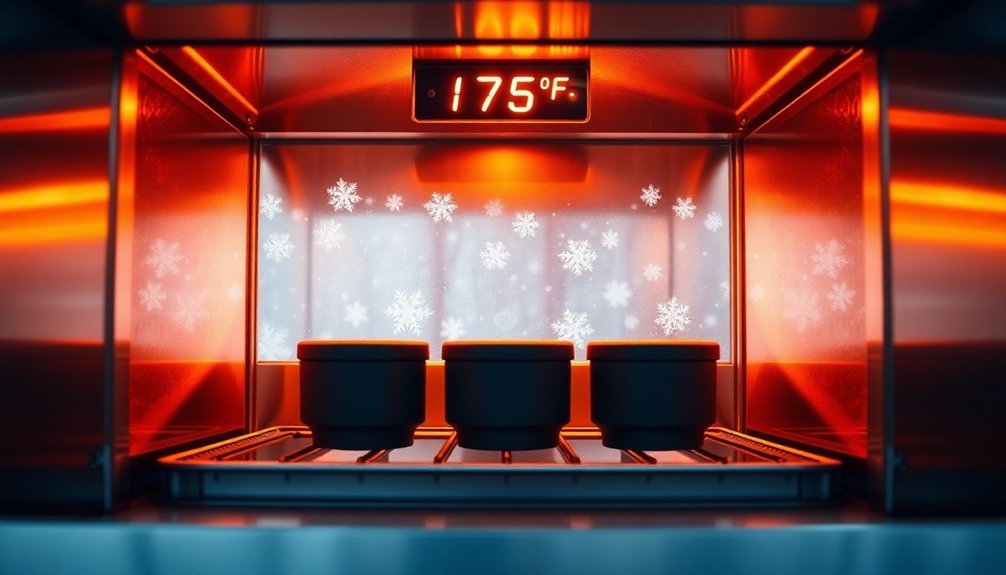
Efficient pre-warming demands a properly configured heat collection chamber in your solar oven.
You'll need a sturdy steel structure with stainless steel exteriors that can withstand high temperatures while maintaining safety. The chamber's design incorporates fiberglass seals and mechanical stops to secure your moulds, whether positioned vertically or horizontally.
Your heat collection system should include electric heating elements or gas-fired systems, coupled with air circulation fans for uniform temperature distribution. The 12 kW power supply ensures consistent heating performance throughout operation.
You'll benefit from the heat exchanger that pre-heats incoming air by 30-50°C, considerably reducing energy consumption. The Siemens PLC control system lets you monitor temperature parameters precisely, while the O.R.S valve reduces oxygen levels to minimize fire risks.
For ideal performance, you'll appreciate the system's ability to maintain temperature differences within 5 degrees through effective airflow management.
Frequently Asked Questions
Does Leaving the Kitchen Door Open Affect Oven Preheating Time?
Yes, leaving your kitchen door open will slow down your oven's preheating time because cold air enters while warm air escapes. It's best to keep the door closed for faster, more efficient preheating.
Should I Adjust Preheat Temperature When My Kitchen Is Extremely Cold?
You don't need to adjust the preheat temperature, but you'll need to allow extra time for preheating. Use an oven thermometer to confirm when your oven reaches the desired temperature before baking.
Will Using Aluminum Foil on Racks Impact Winter Preheating Efficiency?
Yes, you shouldn't use foil on racks as it'll disrupt heat distribution and airflow in your oven. It can reflect heat unevenly, block proper circulation, and potentially damage heating elements, making preheating less efficient.
Can Frozen Oven Mitts Damage the Heating Elements During Preheating?
You don't need to worry about frozen oven mitts damaging heating elements during preheating. There's no evidence they cause harm, and you shouldn't be using oven mitts near heating elements anyway for safety reasons.
Does Running the Dishwasher Simultaneously Help Warm the Oven Faster?
No, running your dishwasher won't help your oven preheat faster. While both appliances generate heat, they operate independently. Your oven's preheating time depends on its own heating elements and internal mechanisms.
In Summary
You'll find these three methods of preheating your oven during winter months both efficient and cost-effective. By properly positioning your solar reflectors, installing insulation layers, and utilizing a pre-warming heat collection chamber, you're maximizing heat retention while minimizing energy waste. Whether you choose one technique or combine all three, you've got practical solutions to maintain consistent oven temperatures even in cold weather.

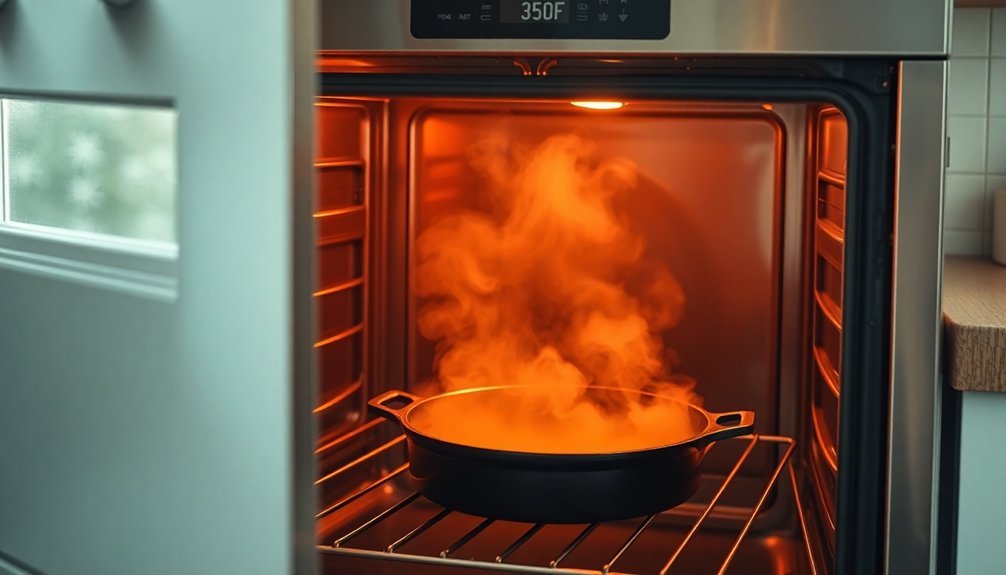
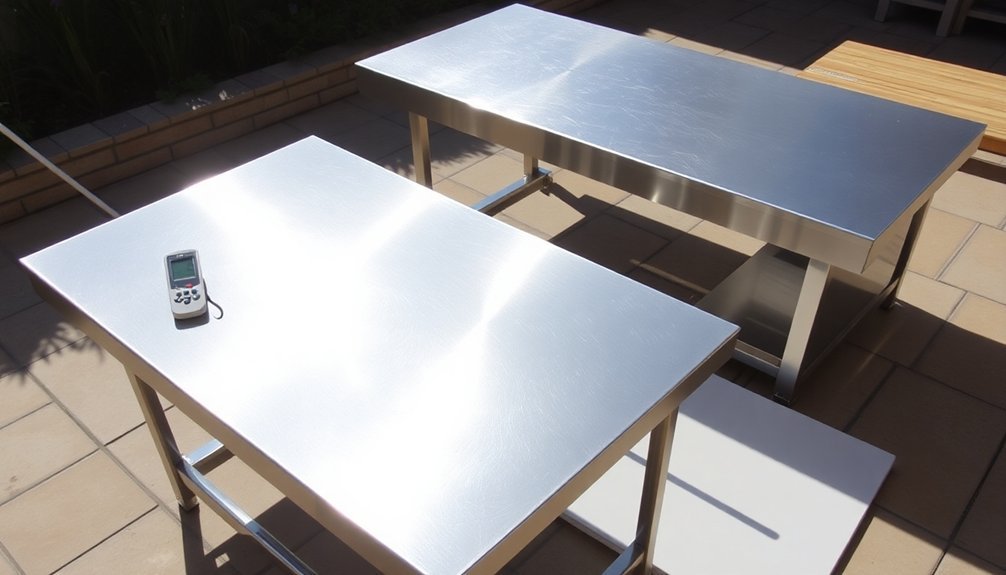
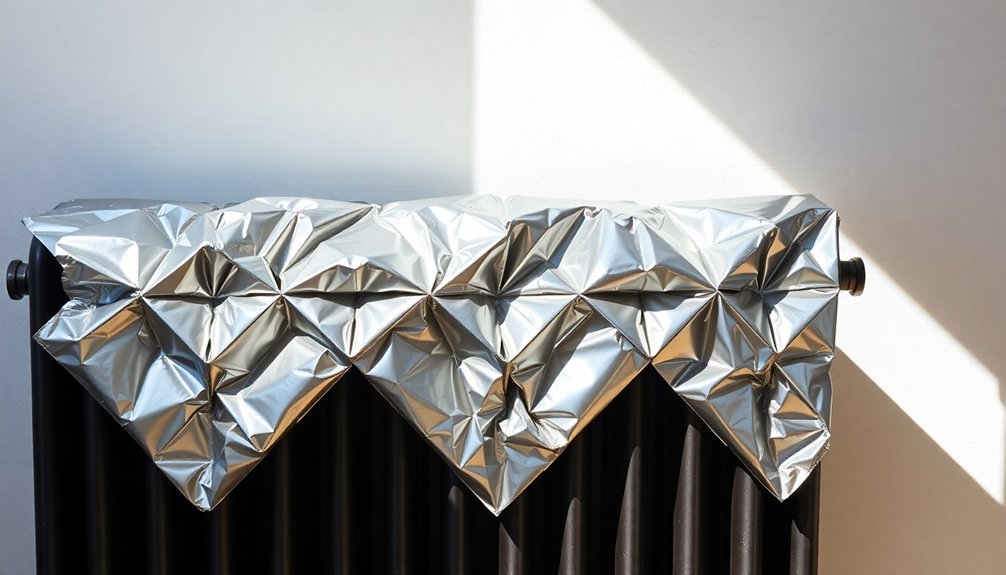
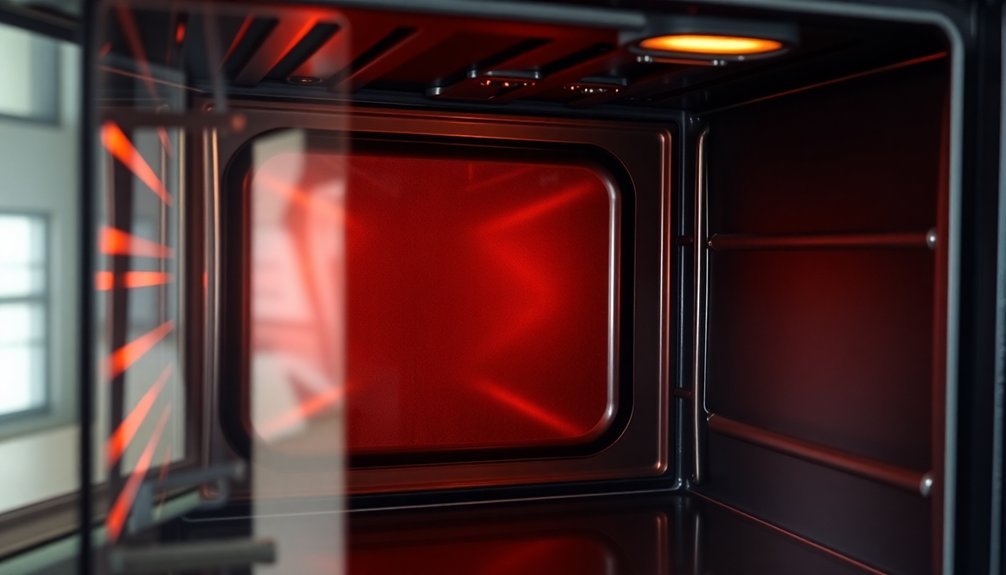
Leave a Reply